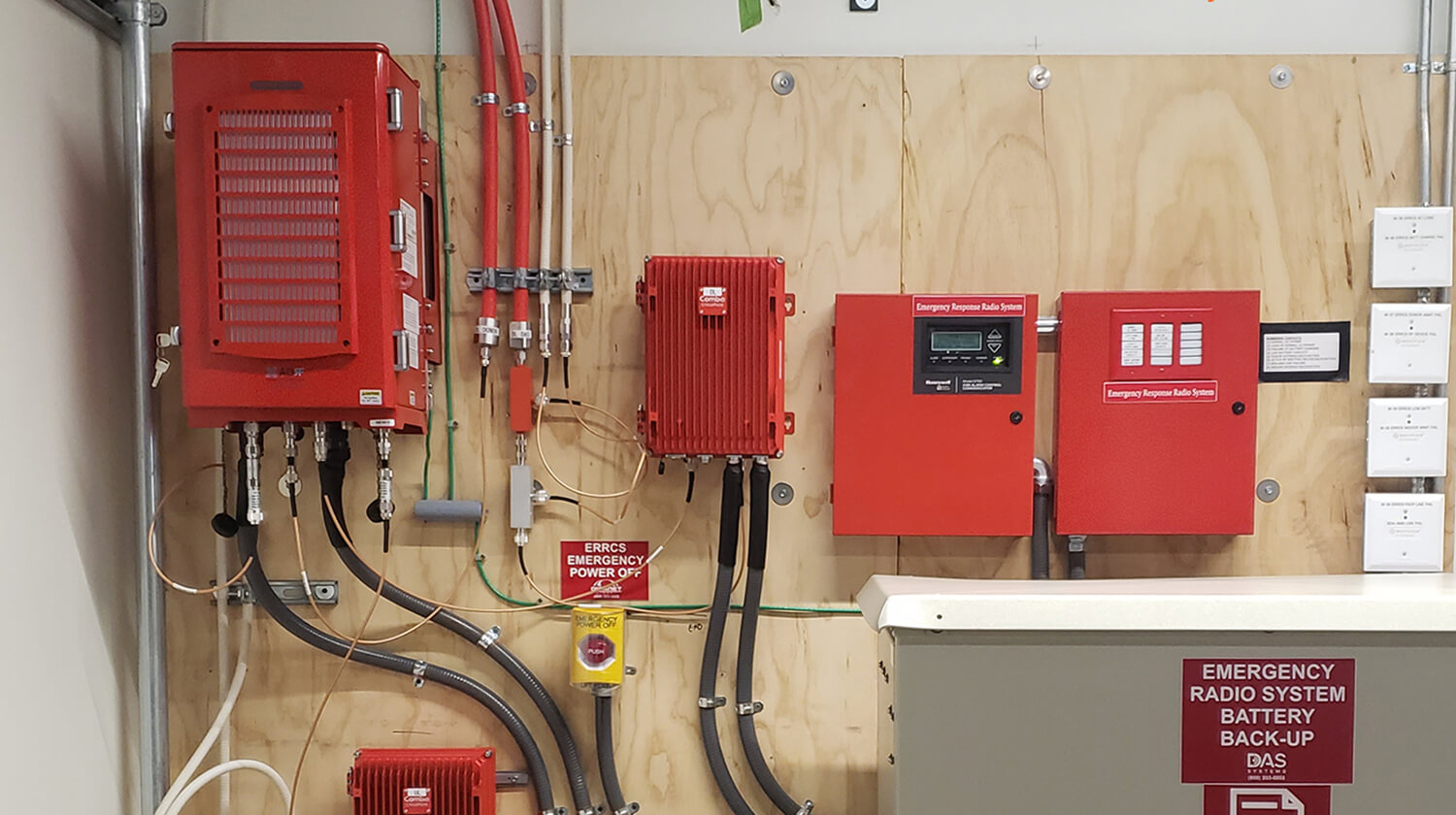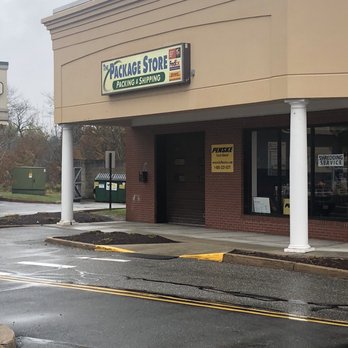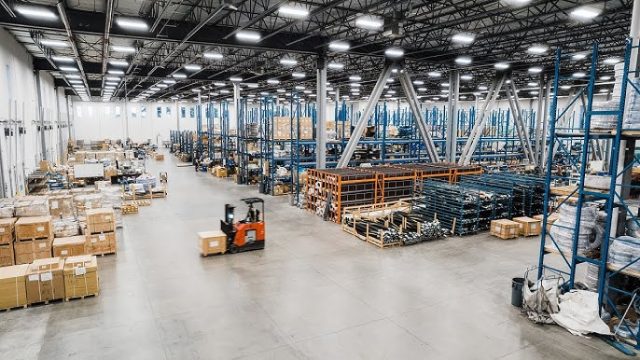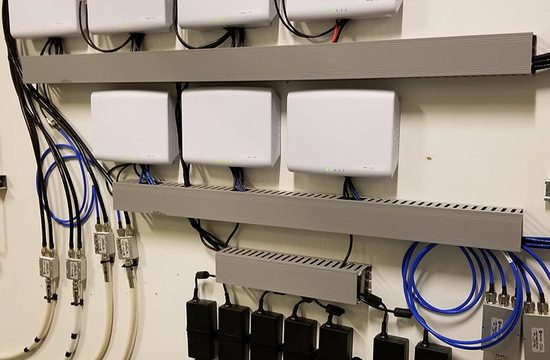BDA System Installation Services
Maximum Communications delivers expert Bi-Directional Amplifier (BDA)
installation to boost emergency radio signals in hard-to-reach areas
of your building. Our certified team ensures systems meet IFC and NFPA
codes, keeping you compliant and first responders connected when it
matters most.
What Is a BDA System?
A Bi-Directional Amplifier (BDA) system strengthens radio signals in areas where coverage is weak—such as stairwells, basements, Garages, Commercial and large concrete spaces. It plays a crucial role in keeping first responders connected during emergencies.
Many local codes, including IFC Section 510, now require reliable public safety radio coverage. If your building doesn’t meet code, you could end up with delays, fines or worse, no way to communicate when it really matters.
That’s where we come in. At Maximum Communications, we take care of the entire process. Testing, designing, and installing a BDA system that fits your building and meets every code requirement. You’ll be covered and ready, without the stress.


Why You Need a BDA System
Most buildings block emergency radio signals. Stairwells, basements, and thick walls create dead zones where first responders can’t communicate. A BDA system fixes this by boosting signal strength throughout your building, keeping you compliant with IFC 510, NFPA 72, and local fire codes.
At Maximum Communications, we make sure your building stays safe, connected, and up to code.
Our BDA System Installation Process
RF Site Survey
We start with a signal strength test throughout the building. This tells us where coverage is weak and what’s needed to meet code.
Custom System Design
No cookie-cutter setups. We design your bi-directional amplifier system to fit your building layout, materials, and signal challenges.
Professional Installation
Our certified technicians install all system components—BDAs, donor antennas, coaxial cabling, and backup power systems—using UL-listed equipment that complies with local and national codes.
Testing and Commissioning
Once installed, we test the full system, walk through signal checks with your local AHJ, and make sure everything passes inspection.
Final Documentation
You’ll receive full documentation, including RF results, layout drawings, and specs—everything your AHJ needs for sign-off.
Compliance & Certification: Ensuring Your BDA System Meets Industry Standards
Why BDA System Compliance Matters
BDA systems are very important for two-way communication to work during emergencies. Regulatory bodies have set strict rules to make sure these systems work well in all situations. Following the rules not only keeps people safe, but it also keeps building owners from getting in trouble with the law or losing money.
Public Safety & Emergency Response: BDA systems improve emergency responders’ ability to communicate during crises, directly impacting safety outcomes.
Legal Requirements: To meet safety codes, a lot of cities, states, and towns require BDA systems to be installed in certain types of buildings. If you don’t follow the rules, you could be fined, have to wait longer to move into the building, or even have to pay a fine for not following the rules.

NFPA Standards for BDA System Installation
We always follow the National Fire Protection Association (NFPA) rules, like NFPA 1221 for emergency communications systems and NFPA 72 for fire alarm systems. These rules make sure that all BDA installations can talk to each other in an emergency.
- NFPA 1221: This standard tells emergency responders how to use radios in buildings. It makes sure that BDAs have a strong and steady signal all over the building.
- NFPA 72: This standard is about fire alarm systems, which often work with BDA systems to make it easier to talk to each other during fires and other emergencies.


FCC Certification for BDA Systems
Our BDA systems have been certified by the FCC, which means they meet federal communication standards. This certification means that the equipment meets the Federal Communications Commission’s requirements for frequency, power, and performance. It helps make sure that your BDA system is safe to use, works as it should, and doesn’t get in the way of other communication systems.
Industries We Serve
Not every building needs the same setup but all need to meet code if signals drop inside. At Maximum Communications, we’ve installed BDA systems in a wide range of properties, each with unique challenges and requirements.
If your building blocks emergency radio signals, we can help. For improving every day in-building cellular coverage, we also offer Commercial Cell Booster installations.
We Install BDA Systems In:
- Commercial Properties
- Healthcare Facilities
- Educational Campuses
- High-Rise Buildings
- Industrial Buildings
- Hospitality & Event Venues

Why Choose Maximum Communications
At Maximum Communications, our top priority is to offer the best Emergency Responder Communication Enhancement Systems (ERCES) that go above and beyond what is required in terms of compliance and performance. By choosing us, you’re working with a team that has unmatched knowledge and a dedication to quality. This means that your system will always be functioning properly and ready to work in an emergency.
Here’s why you should choose us:
- Certified, Experienced Technicians: Our team knows the codes, the systems, and how to install them with zero guesswork.
- Custom-Fit Solutions: Every building is different. We design each BDA system based on real signal data and layout specifics.
- Start-to-Finish Support: From your first call to the final walk-through with the fire marshal, we stay hands-on. You’ll work with one dedicated team—from survey to final sign-off.
- Ongoing Service: We’re here after the install too, with annual testing, maintenance, and fast repairs if needed.
- Clear Communication: No tech jargon, no confusing reports. We keep it simple, so you always know what’s going on and what to expect.
Can a BDA System Also Improve Cellular Reception?
While a BDA system is often associated with enhancing 2-way radio communications for emergency services, a cellular BDA system can also be added to improve cellular reception within a building.
For buildings that require both enhanced emergency communication and improved cellular reception, RFE Communications can design a comprehensive DAS solution that addresses both needs. By installing a separate cellular BDA system or integrating cellular amplification capabilities into a DAS, we ensure that occupants enjoy strong cellular reception for daily communications while first responders have the reliable 2-way radio connectivity they need in emergencies.
This dual approach allows for a seamless, all-encompassing communication infrastructure within a building, ensuring that no matter the situation, clear and reliable communication is maintained. Trust Maximum Communications to design a system that keeps everyone connected, safe, and informed.


Integration with Fire Alarm Systems
Get Expert BDA System Installation Services Nationwide
Our BDA systems have been certified by the FCC, which means they meet federal communication standards. This certification means that the equipment meets the Federal Communications Commission’s requirements for frequency, power, and performance. It helps make sure that your BDA system is safe to use, works as it should, and doesn’t get in the way of other communication systems.
Frequently Asked Questions (FAQs)
If your building has spots where public safety radios stop working, like stairwells, parking garages or basements, it likely needs a BDA system to meet inspection standards. We can run a signal test to confirm and guide you from there.
Yes. Codes like IFC Section 510 and NFPA 72 now require BDA systems in many commercial, residential, and public buildings. Your local fire marshal (AHJ) will expect compliance before occupancy.
The cost really comes down to your building—its size, the materials used, and how strong the signal is now. Once we’ve done a site visit, we’ll give you a straightforward quote so you know exactly what to expect.
Everything: RF testing, system design, equipment installation, final commissioning, and full documentation for AHJ approval.
Yes. We offer ongoing maintenance, required annual testing, and fast support if anything ever goes down.
ERCES is the full emergency communication system. The BDA is one of its main components—responsible for boosting signal strength in both directions.
"It was a good choice for me and the communication system in our building to work with Maximum Communications. Their BDA installation not only met our compliance needs, but it also made the signal more reliable overall. The team was professional, quick, and really understood what we needed. I highly recommend their services!

-
Sarah House
Facility Manager
"We had a short time frame to install a BDA system in our office building, and Maximum communications finished ahead of schedule. It was impressive how well they paid attention to detail and how smoothly the installation went. We can now count on them for reliable emergency communication."

-
John Markus
Operations Director
"As a property manager, it's very important for me to make sure that all the systems in our buildings are safe and up to code. The team did a great job putting in our BDA system and following all the fire and safety rules. Their professionalism and help have made a big difference.

-
Lisa Deniel
Property Manager










